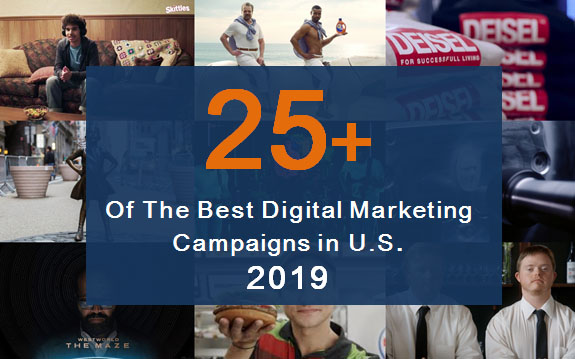Building Trust and Credibility with Online Branding
Branding | Feb 11, 2024
Here’s the thing: putting all your effort and money into a physical store in this fiercely competitive market we have today may no longer be enough to achieve that ever-so-desired growth and success. It’s a reality any business must realize.
Customers now expect a hassle-free experience across all channels, from researching to engaging with and buying from brands.
Enterprises need to rethink and elevate their online branding strategy. Otherwise, they risk losing opportunities and lagging behind competitors. These are endings you don’t want for your own business.
As per a 2022 report, around 33% of new businesses fail just within two years, while 50% thrive after five years. Fewer than 35% make it to 10 years. While many factors contribute to this failure, the one to blame is weak online branding.
Having a strong and cohesive brand identity across all digital touchpoints is more necessary than ever. This not only attracts potential customers but also cultivates trust, loyalty, and a sense of authenticity.
Quick Overview of Online Branding
There were 1.13 billion websites on the internet fighting for customer attention in 2023. This number just keeps rising.
What can make or break your business is how you present your products or services to the world. Now, this is where effective online branding can be of immense help.
Also known as digital branding, it refers to the process of establishing and promoting a brand’s identity and presence on the internet. Leveraging various online platforms to create a consistent and positive business perception – that’s all about it.
If you’re not sure how to get started on this journey, a branding agency in Bristol or any local digital expert in your area can be invaluable. Just be sure to choose a reputable partner who aligns with your business goals and values.

Tips to Build Solid Trust and Credibility with Your Brand
Imagine your brand as if it’s a stranger trying to make a positive first impression. It can be pretty tough to convince prospects that you’re worth their time and money, let alone their attention.
Just as in interpersonal connections, it requires time, consistency, and a genuine effort to understand and meet your target audience’s preferences.
But fret not – here are some strategies that’d help you present yourself as a credible leader whom customers can trust.
Define Your Niche and Ideal Customer
Before you promote yourself as an authority, get crystal clear on your niche. How do you go about it? What needs to be done?
Offer a specific brand promise that sets you apart and targets an ideal buyer persona. Speak to the detailed customer pain points you aim to alleviate.
The more tailored your message is, the more it will resonate as reliable. It’d be best to avoid sweeping statements that could apply to anyone. Personalized content is what feels genuine.
For example, instead of a generic statement like, ‘I can help anyone achieve success,’ consider something more detailed, such as, ‘I specialize in guiding individuals through the initial challenges of launching their tech startups, providing strategic insights and hands-on support.’
Don’t forget to specify the platforms you excel in, the unique strategies you employ, and the measurable results you’ve achieved for clients. What for? Well, it allows you to address the precise pain points faced by aspiring entrepreneurs entering the tech startup arena.
Create Valuable, Ethical Content
The allocation of content marketing budget is increasingly recognized as a strategic investment for businesses. Marketers are acknowledging high-quality content plays pivotal roles in shaping brand perception, audience engagement, and overall marketing effectiveness.
Research analysts recently forecasted the content marketing industry to reach USD 2 trillion in 2032 with a whopping annual growth rate of 16.9%.
This data is attributed to consumers who’ve become discerning in their interactions with brands, actively seeking content that resonates with their pain points.
Here are different content strategies to enhance your brand’s impact and meet the evolving demands of your audience:
- How-to Guides and Tutorials: Develop comprehensive how-to guides and tutorials that offer practical, step-by-step instructions on solving problems or achieving specific goals. These actionable steps enhance the user experience and ensure the effectiveness of your instructional content.
- Interactive Content: Engage your audience with interactive content such as quizzes, polls, surveys, and interactive infographics. This captivates attention and encourages active participation, making the content-sharing experience more enjoyable and memorable for your audience.
- Behind-The-Scenes Content: Offer a glimpse into the inner workings of your business. Share behind-the-scenes content, team member stories, and day-in-the-life features to humanize your brand. This transparency fosters a connection between your audience and the people behind the products or services, creating a more relatable and personable brand image.
- Customer Success Stories: Showcase the success stories of your customers who’ve benefited from your products or services. This form of social proof adds credibility to your brand and demonstrates real-world applications. Whether through written case studies, video testimonials, or infographic summaries, these stories highlight the tangible impact of your offerings.
Nothing boosts brand trust faster than generous, engaging content. So, build a library of valuable resources that not only positions your brand as an authority but also creates a lasting connection with your customers.

Cultivate a Consistent Brand Image
It may be a minor detail, but cultivating a consistent brand image across all customer touchpoints is crucial to establishing recognition.
From logo design and color schemes to messaging and overall customer experience – all these elements create a cohesive narrative that defines and distinguishes the brand.
With a reliable, unified aesthetic and tone, customers can instantly recognize your brand and what it stands for. Studies have shown that consumers tend to remember brand logos more effectively than brand names, especially in the gaming industry.
Yes, maintaining brand consistency takes conscious effort. But the result? Over time, it cements your unique identity in the minds of consumers. It pays big dividends through improved perception and loyalty.
Invest in SEO
One worthwhile investment you can make for bolstering your online presence is prioritizing search engine optimization (SEO). Here are some SEO best practices you can implement:
- Perform Comprehensive Keyword Research: Pick relevant keywords and phrases that your target audience is likely searching for. Make sure to include variations and long-tail keywords.
- Optimize Website Content Around Your Chosen Keywords: Integrate your chosen keywords into your page titles, meta descriptions, headers, and image names— basically, anywhere Google’s web crawlers look. But never make the mistake of over-optimizing or forcing keywords unnaturally. Focus on creating valuable, engaging content instead.
- Check Technical Elements: Work on enhancing technical elements like site architecture, speed, and responsive design. These factors affect how search engines index and rank your pages.
- Build High-Quality Backlinks: These serve as pathways between different web pages. They’re the ones telling Google that your content is trustworthy and worthwhile. Guest posting and influencer marketing can help with link-building.
The key is staying patient and persistent with SEO. Results compound over time as you earn credibility in search engine algorithms.
Conclusion
Solid online identity develops gradually but pays dividends over time. You can’t merely proclaim expertise or integrity through claims. Savvy consumers filter hype—you must demonstrate worthiness through niche focus, proof, generosity, consistency, and transparency.
While establishing trust requires strategic effort, it attracts loyal brand advocates who buy based on credibility, not just slick marketing. Follow the tips outlined in this article, and you’ll position your business as respected and influential within your industry.
Warning: Undefined array key "sidebar_ads" in /home/dmc/public_html/wp-content/themes/DMC/functions/helpers.php on line 824





